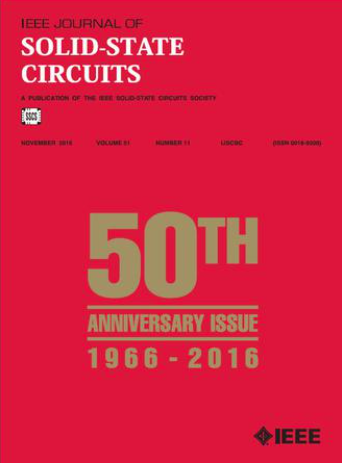A 2000-volumes/s 3-D Ultrasound Probe With Monolithically-Integrated 23 × 23-mm² 4096 -Element CMUT Array
IF 4.6
1区 工程技术
Q1 ENGINEERING, ELECTRICAL & ELECTRONIC
引用次数: 0
Abstract
This article presents a 4096-element ultrasound probe for high volume-rate (HVR) cardiovascular imaging. The probe consists of two application-specific integrated circuits (ASICs), each of which interfaces with a 2048-element monolithically-integrated capacitive micro-machined ultrasound transducer (CMUT) array. The probe can image a求助全文
约1分钟内获得全文
求助全文
来源期刊

IEEE Journal of Solid-state Circuits
工程技术-工程:电子与电气
CiteScore
11.00
自引率
20.40%
发文量
351
审稿时长
3-6 weeks
期刊介绍:
The IEEE Journal of Solid-State Circuits publishes papers each month in the broad area of solid-state circuits with particular emphasis on transistor-level design of integrated circuits. It also provides coverage of topics such as circuits modeling, technology, systems design, layout, and testing that relate directly to IC design. Integrated circuits and VLSI are of principal interest; material related to discrete circuit design is seldom published. Experimental verification is strongly encouraged.
 求助内容:
求助内容: 应助结果提醒方式:
应助结果提醒方式:


